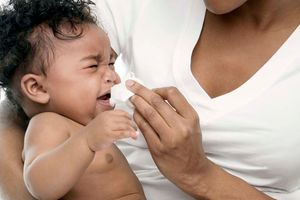All you need to know about cleft lip and palate

When treating cleft lip and palate, surgery is the most common form of treatment.
What you need to know:
- Cleft lip and palate occur when a baby’s lip or mouth fails to form properly during pregnancy.
- A baby may have openings at both the front and back parts of the roof of the mouth.
- This opening can be a large opening that goes through the lip and into the nose, an opening that goes through the middle of the lip, or an opening that goes through both sides of the lip.
Thousands of children are unable to live a normal life because of cleft lip and palate. This is a birth defect that denies them the ability to smile and gel with other children and the community. According to Operation Smile Mission, an organisation that facilitates free surgeries for children with cleft lip and palate across Kenya, an estimated one in every 500 Kenyan babies is born with a cleft lip or cleft palate. Not many parents are aware of cleft lip and palate, what it entails and how it is treated. This has seen many children resigned to shame, stigmatisation and abandonment.
What is it?
According to the Centre for Disease Control, this birth defect occurs when a baby’s lip or mouth fails to form properly during pregnancy. The CDC explains that the baby’s lip forms between the fourth and seventh week of pregnancy. “The baby will have a cleft lip if the tissue that makes up the lip does not join completely before birth. This causes an opening in the upper lip,” says the CDC. This opening can be a large opening that goes through the lip and into the nose, an opening that goes through the middle of the lip, or an opening that goes through both sides of the lip. If a baby has a cleft lip, he or she can also have a cleft palate. The palate, which is also known as the roof of the mouth, is formed between the sixth and ninth week of pregnancy. If the tissue that forms the roof of the mouth does not join together completely during pregnancy, the baby will have a cleft palate. A baby may have openings at both the front and back parts of the roof of the mouth.
Causes
According to the Centre for Diseases, the actual causes for cleft lip and palate remain largely unknown. However, there are certain risk factors that predispose expectant mothers to have babies with cleft lip and palate.
Smoking: If you smoke while pregnant, your baby will have a higher chance of being born with cleft lip and palate than the baby of a mother who does not smoke during pregnancy.
Diabetes: Expectant mothers who are diagnosed with diabetes are at an increased risk of having babies with a cleft lip than expectant mothers who don’t have diabetes. In expectant mothers with diabetes, the CDC says that a cleft lip is more likely even without the likelihood of the baby also has a cleft palate.
Medications: There are certain medications that will put pregnant women at an increased risk of having a baby with cleft lip and palate. This risk is mainly manifested if the pregnant woman takes these medicines within the first three months of her pregnancy, also known as the first trimester. According to the CDC, topiramate and valproic are two of the most likely drugs to cause cleft lip and palate when taken during the first trimester, especially without proper medical prescription. These two drugs are used to treat epilepsy.
Diagnosis and Treatment
It is possible to tell if your baby will have a cleft lip and palate before birth. This can be done through an ultrasound scan. However, not all types of cleft palate are diagnosed during pregnancy or immediately after birth. According to the CDC, submucous cleft palate and bifid uvula, which are types of cleft palate, are only diagnosed much later in life.
When treating cleft lip and palate, surgery is the most common form of treatment. According to the Operation Smile Mission, this surgery usually lasts for less than an hour. “In as little as 45 minutes, and for approximately Sh. 27,000 one cleft lip surgery can change a child’s life forever,” says the organisation.
Surgery for either a cleft lip or cleft palate will depend on the exact type that the baby presents. According to the Kenyatta University Teaching, Referral & Research Hospital (KUTRRH), babies with cleft lip and palate may undergo any of these types of surgery:
- Cleft Lip
- Bilateral
- Cleft Palate
- Fistula
- Lip and Palate
- Tongue Tie
- Lip Notch
- Lip Rev
- Palate Rev
- Hemangioma
- Vestibuloplasty
- Rhinoplasty
The CDC recommends that a cleft lip be repaired within the first 12 months after birth while a cleft palate surgery is done within the first 18 months after birth. “Even after this surgery, the baby might require additional corrective surgeries to help improve their speech, breathing, hearing, and language development,” the CDC states. “The baby may also require related types of treatment and therapy services including speech therapy, and dental or orthodontic care.”





